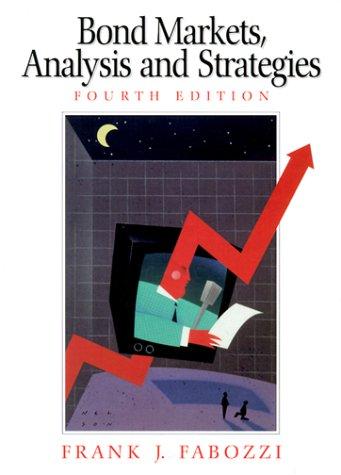Answered step by step
Verified Expert Solution
Question
1 Approved Answer
Need feed back on my answer: Quesiton: What are the primary purposes of the international capital market? Define the foreign exchange market and explain today
Need feed back on my answer:
Quesiton:
What are the primary purposes of the international capital market? Define the foreign exchange market and explain todays exchange rate arrangements. Additionally, discuss the steps some nations take to maintain more stable exchange rates.
What are some steps an organization engaging in international trade can take to minimize foreign exchange risk?
MY Answer:
According to our textbook, the international capital market is a network of individuals, companies, financial institutions, and governments that invest and borrow across national boundari esThe international capital market provides opportunities for borrowers by joining borrowers with lenders, such as large international banks, from different nations. Greater access to opportunities helps investors leverage their loss and gains across different investments along with reducing their investment risk.
The foreign exchange market is a market for the trading of currencies. The buying and selling of currencies set the exchange rates and prices of the currencies accordingly. The foreign exchange market has four main functions including currency conversion, currency hedging, currency arbitrage, and currency speculation. Currency conversion allows businesses in different nations with different currencies to transact business by converting their currency to the partnering nation. Currency hedging provides insurance for any losses that investors potentially could experience from adversary exchange rates. It allows business to protect themselves in credit transactions and reduces their risk of transferring international funds. The instantaneous purchase and sale of currency for profit is currency arbitrage. Todays technology allows for quick transactions that should provide overall profitability for the currency trader. On the other hand, traders can purchase and sell currency with the expectation that it will change in value and generate a profit in the future. This is known as currency speculation. To summarize, the functions of foreign exchange markets are to facilitate currency exchange, reduce foreign exchange risk, and generate a profit for the traders or investors.
Todays exchange rate arrangements involve little government involvement to realign exchange rates. Developing countries will often peg another countrys currency that is more stable and dependable in international trade. In pegged exchangerate arrangements, smaller countries, such as Belize and Saudia Arabia, will peg their currency to the US dollar or even the EU euro. Another way that a country can tie their currency to another currency is via a currency board. A currency board is a monetary regime that is based on an explicit commitment to exchange domestic currency for a specified foreign currency at a fixed exchange rate. Currency boards cap inflation as it requires the government to have enough reserves to cover domestic currency that it issues beyond the amount of foreign currency it must hold to cover the amount of domestic currency.
There are ways that nations can counter the effects of a strong or weak economy and work to maintain stable exchange rates. For strong currencies, they can adapt their product offerings to meet the demands of customers, cut costs by pruning operations and sourcing raw materials overseas, and even freezing prices. To counter a weak currency, production companies can source raw materials domestically, grow sales domestically, expand exports, and reduce expenses. Supply and demand impact currency rates so making changes to operations that can influence supply and demand will in return counteract the changes in currency rates and aid in their stability.
Engaging in international trades comes with risks. However, some risks can be minimized by having a plan or a strategy. Risk management strategies allow multinational organizations to identify their risks and reduce their exposure to them. One strategy to mitigate these risks is currency hedging. It is important to understand all the regulations that vary from country to country and stay informed about what is happening in the market. It is important to identify any potential risks and stay focused on the operations main goals and any underlying problems. Currency hedging provides a way to neutralize an organizations risks against adversary exchange rate fluctuations.
Step by Step Solution
There are 3 Steps involved in it
Step: 1

Get Instant Access to Expert-Tailored Solutions
See step-by-step solutions with expert insights and AI powered tools for academic success
Step: 2

Step: 3

Ace Your Homework with AI
Get the answers you need in no time with our AI-driven, step-by-step assistance
Get Started


